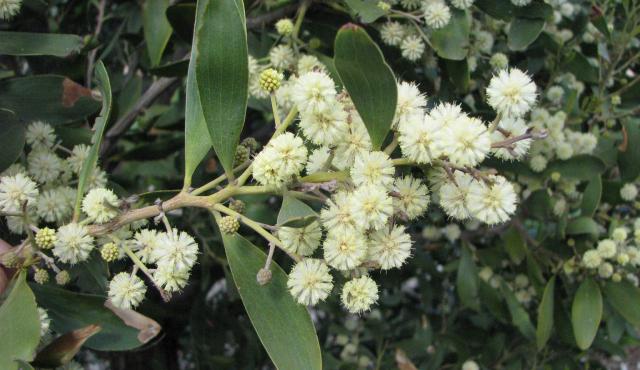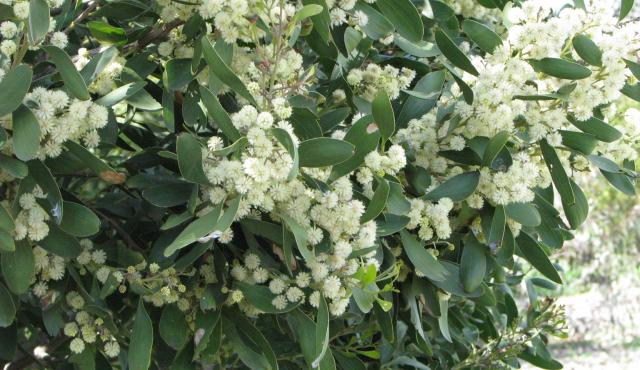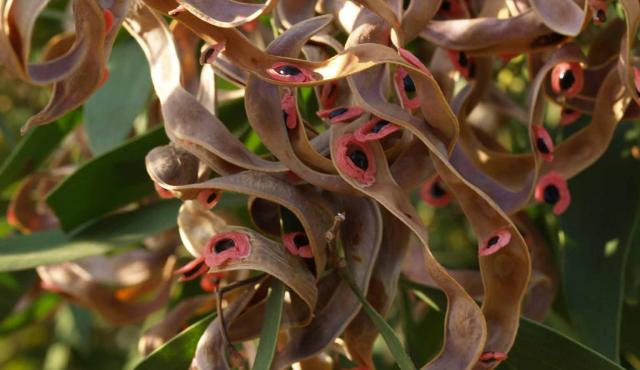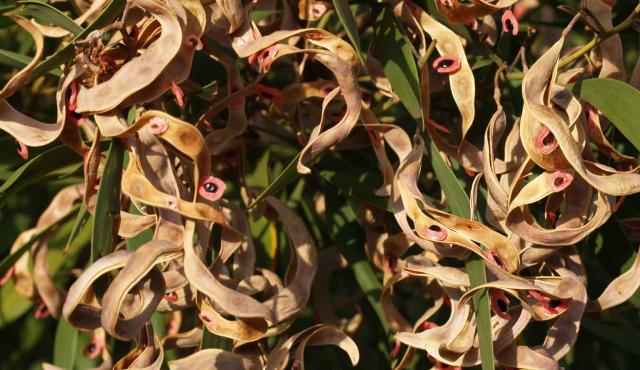



Blackwood
Acacia melanoxylon
Small tree to 10-20 m tall but can grow up to 40 m in north-west Tasmania. Can also grow as a short tree to 5 m in drier habitats. Straight, dull-green leaves that can be narrow to ovate in shape. White to cream ball-shaped inflorescence. Hard, scaly bark. Feathery bipinnate leaves often persist in young plants. Variable flowering time determined by range.
| Details | |
|---|---|
| Flora Type | Trees |
| Distinctive Features | Seeds have a distinctive red attachment stalk (funicle) that twice encircles the seed, and this is a diagnostic feature of some Acacia species. Hard fissured bark. |
| Biology | Perennial. Often found on escarpments and on the edges of grasslands and grassy woodlands. In these habitats it is stunted. Reproduces from seed and root suckers. Flowers are honey-scented and predominantly insect pollinated. Not all trees within a given population will flower every year. Seeds are dispersed by gravity, ant activity and birds. |
| Native Status | Native |
| Flowering Time | Jul-Oct |